I really can’t get enough of this dinosaur it seems. This is what, the third review by me of a Stycacosaurus? This time I will be reviewing Carnegie’s rendition of the semi-popular spiked dinosaur.
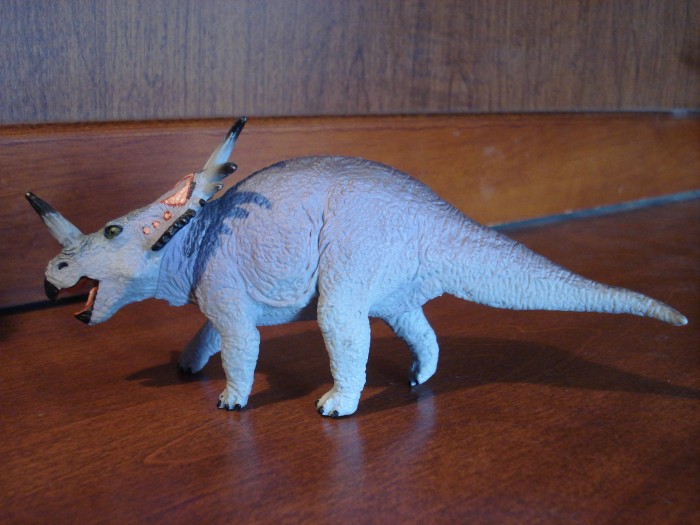
Despite the vast myriad of dinosaurs species turned into models by them, Carnegie only has four ceratopsid species under its belt. Their styracosaurus is one of the later of these, having been released in 2001. As for accuracy, its pretty good but it has some outdated features. As with many outdated or just wrong ceratopsid representations, its front legs are too straight. For a long time ceratopsians were always compared to modern rhinos when it came to their reconstructions so like rhinos, they were always given fully upright posture. It wasn’t until fairly recently that it was realized that the legs physically can’t fit to the rest of the skeleton that way. The front legs of this model, as with all ceratopsians, should be slightly splayed out to the sides. Also the toes are too column-like. They should be more splayed and the hands themselves should be positioned palms in. When I look at the head I also notice that the frill should be at a steeper angle instead of being flat behind the front part of the skull like it is. The model has some good points too, however. The tail is the right length, the spikes are correctly arranged and the face is accurately shaped. I also like how it doesn’t look too overweight or sluggish.
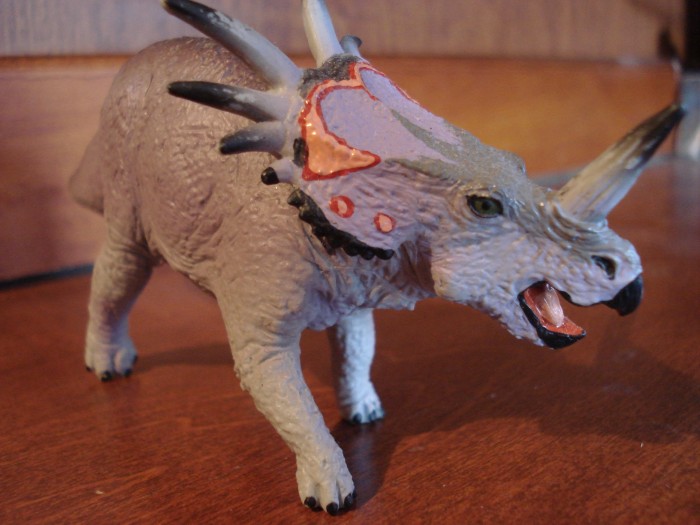
The pose is very active. It’s mouth is open in what can be interpreted as a bellow and the right front limb is forward and slightly raised as if the animal were mid stride. The head is angled upward giving the illusion that the animal has no neck.
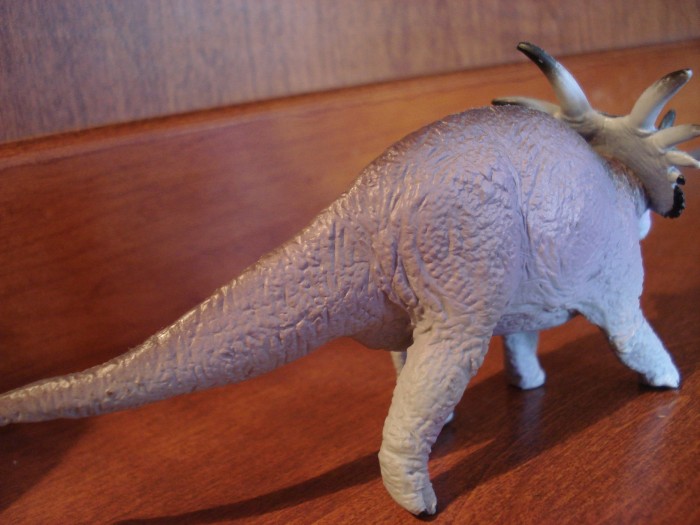
The model has okay detail. It has lots of crinkles all over the body as if the sculptor crumpled up aluminum foil and pressed it on to the still wet model when it was being made. No actual scales are sculpted. The beak is surprisingly sharp but I should also note that the horn and spikes are extremely soft and flexible when compared to the rest of the model. Safety reasons perhaps?
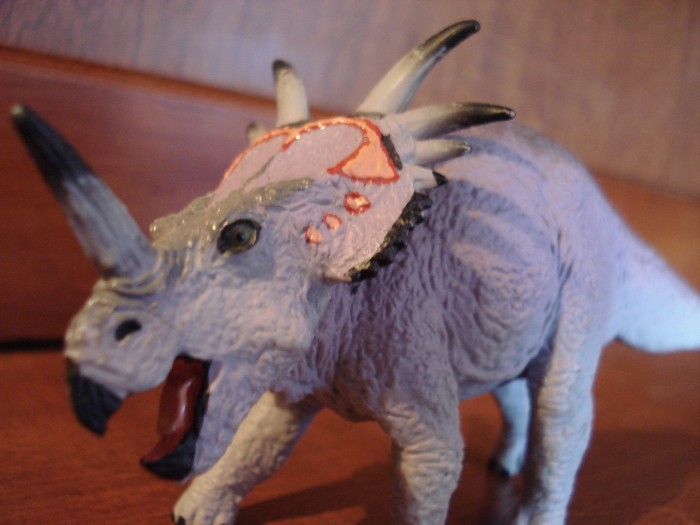
The colors are pretty interesting on this model. Its a base color of a very soft purple. As strange as it sounds it actually works quite nicely. On the underparts it fades to light gray and there is a dark stripe going down the back. the beak, claws and horn/spike tips are all painted black. It has light orange and red display pattern on the frill. It has some nice paint detail like the inside of the mouth, nostrils and eyes. However I do sort of wish the epoccipitals lining the frill were individually painted.
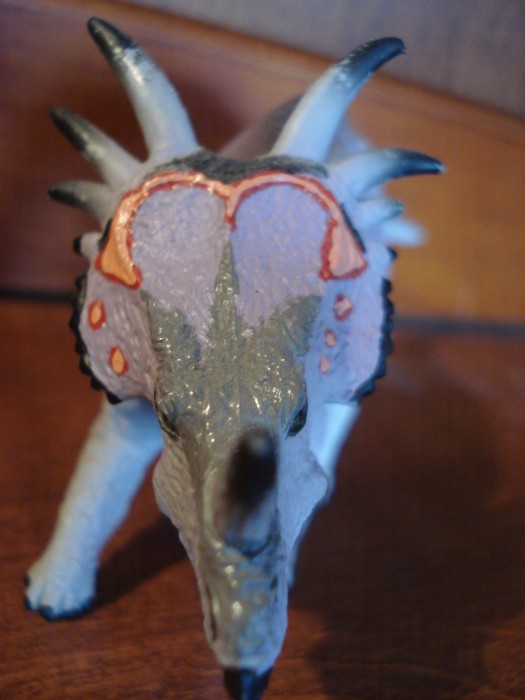
All in all, despite it being slightly outdated, I really like this model. It has definite personality. Its a decent alternative if you are looking for a nice 1:40 scale Styracosaurus and don’t want to shell out the huge amounts of cash for the Battat Version. It is out of production but still can be found on the internet for cheap quite frequently.
Disclaimer: links to Ebay and Amazon on the DinoToyBlog are affiliate links, so we make a small commission if you use them. Thanks for supporting us!




I know this review was done a long time ago, and the figure has been retired for a long time, but I just got one for my daughter, and wow. It is so much better in person than it is in he picture. I always thought this figure looked weak, with questionable coloring. Now, I think it is a underrated figure. Hopefully Safari will come out with a new one soon, (preferably better than CollectA, and more dynamic than the one from Favorite. which is an awesome figure.)
It is no longer possible to copy/paste from this site so it would be much easier if comments were in English.
To copy/paste, just use the snipping tool, then use OneNote to copy text from picture
A mi honesto entender coincido con el autor del blog, aunque a mi en particular me hubiese gustado que estuviese hecho a una escala mayor y que fuese más detallado, como es el Sytracosaurus de Papo, sin embargo como siempre apunto hay que atenerse a los tiempos en que se hizo el animal y que el material va mejorando en el transcurso de los años de una manera geométrica